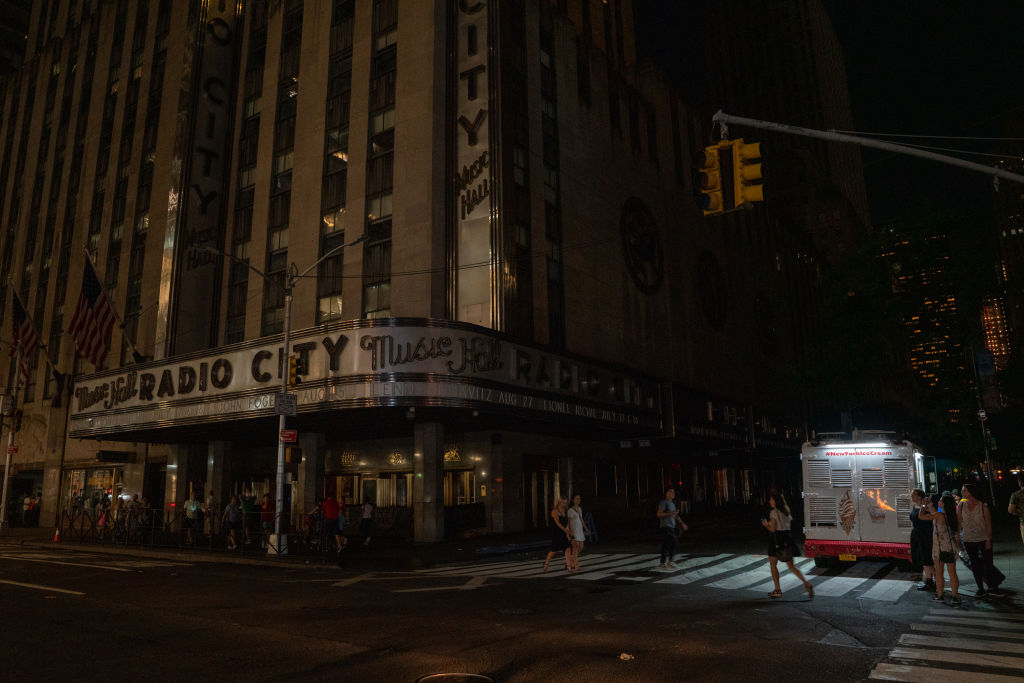Midtown Manhattan was surreal Saturday night.
The center of our little island is supposed to be the center of the universe — yet I am writing this after eating a lukewarm peach for dinner by (hot) candlelight in 90-degree temperatures with the windows shut tight, racing against time to finish it before my computer runs out of its last moments of electricity.
Yes, we want to be the center of finance, tech and media, but we cannot even keep the lights on for a Saturday evening. Meanwhile, our fearless leader, Mayor Bill de Blasio, is radioing it all in from Iowa, where they have plenty of power.
Yesterday, at about 7 p.m., the lights in our apartment just west of Midtown flickered — hard.
We had seen this before. This past winter — Feb. 16, to be exact — as my husband and I were eating dinner, our lights went out, then went back on.
We looked at each other and then suddenly, boom! A manhole had exploded right outside our window. The next two manholes exploded in succession, each boom rattling the windows harder, and sending our next-door neighbor, two small dogs in tow, over to ask what she should do.
Our answer: nothing. The entire street in front of us was in raging flames; even the firefighters were standing well behind their trucks, which were well behind the fire, waiting for a good half-hour for Con Ed to turn off the power before they could put water on it. We couldn’t evacuate directly into a fire; we just stood, far from the windows … and the lights didn’t go out.
That incident took, maybe, half an hour, but it has caused months of chaos since then. Con Ed has spent the last five months digging up our street — 50th Street, just a five-minute walk west of the business capital of the nation — and refilling it, sometimes digging and refilling on the same day, trying to replace yards of burned-out infrastructure across two blocks while still allowing car and truck traffic to snake by. They work during the day; they startle us by waking us up in the middle of the night with klieg lights.
I have no idea if a Saturday night 49th Street substation “incident” — not far from our little one in February — has anything to do with the fact that Con Ed has been desperately digging up our street, one block north, for half a year.
I do know that our infrastructure is fragile — and our emergency response is inadequate. Walking around Midtown Saturday evening was an exercise in picking which dystopia you wanted to focus on.
Thousands of people spilled out of canceled theater performances — spilling into streets and avenues, where they were vulnerable to a wave of cars, buses and trucks moving past nonworking traffic signals, should this have been a terror attack.
Diesel generators kicked in at the World Wide Plaza office building on the West Side, spewing toxic fumes for more than an hour into the windows of nearby elderly tenement residents just a few hundred feet away
Their choice was to shelter in the heat or breathe in poison — this, 12 years after New York supposedly designed a “sustainable” plan for the environment.
Times Square was half-dark and half-light, depending on what venues had invested in generators that, long-term, make the island even hotter for people without air conditioning.
The MTA did a truly heroic job in getting trains stuck in tunnels to the next station so that people could clamber upstairs, but the power cut in Midtown meant that a dozen lines — traveling from Brooklyn to The Bronx — were paralyzed. You weren’t going anywhere if couldn’t go through Manhattan.
This piece originally appeared at the New York Post
______________________
Nicole Gelinas is a senior fellow at the Manhattan Institute and contributing editor at City Journal. Follow her on Twitter here.
This piece originally appeared in New York Post
